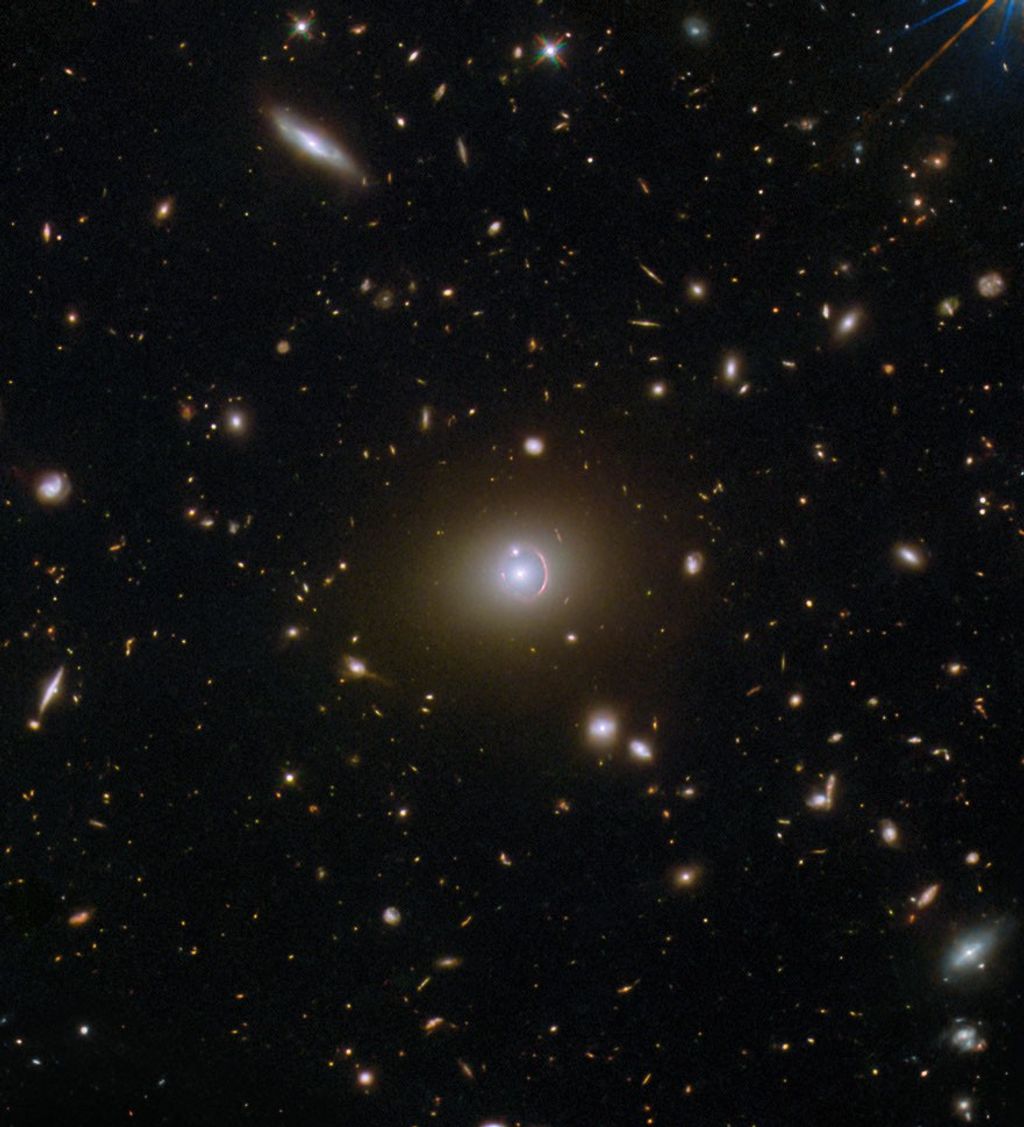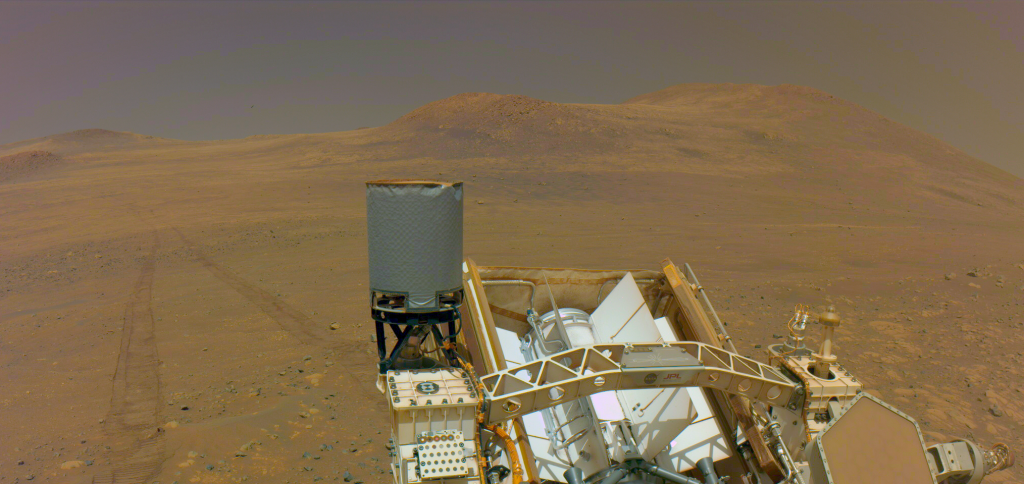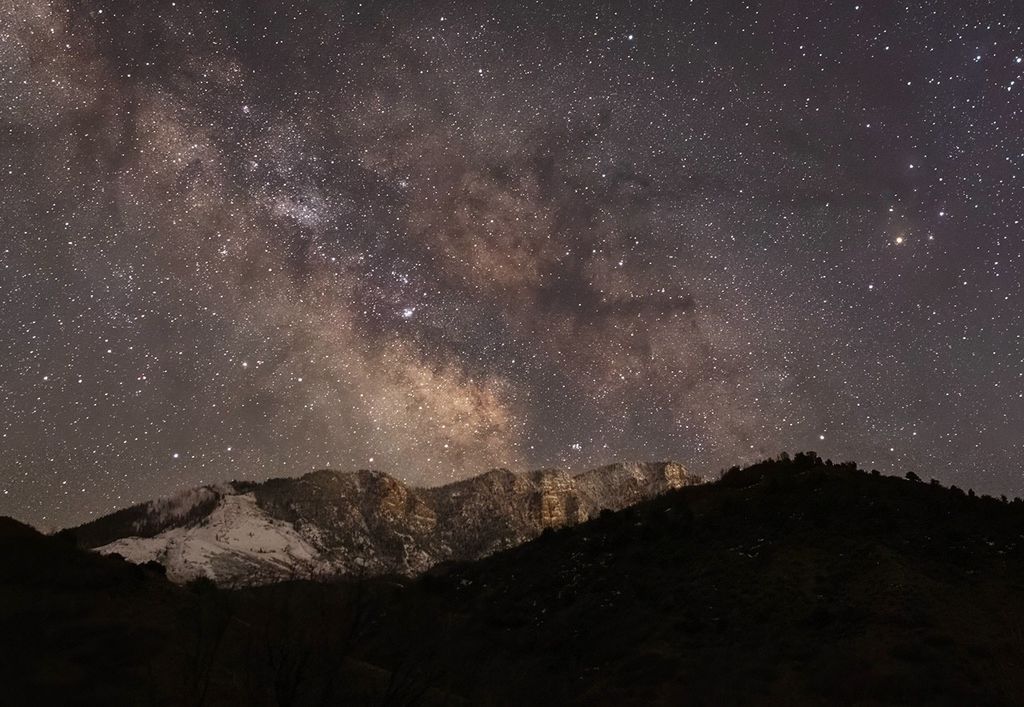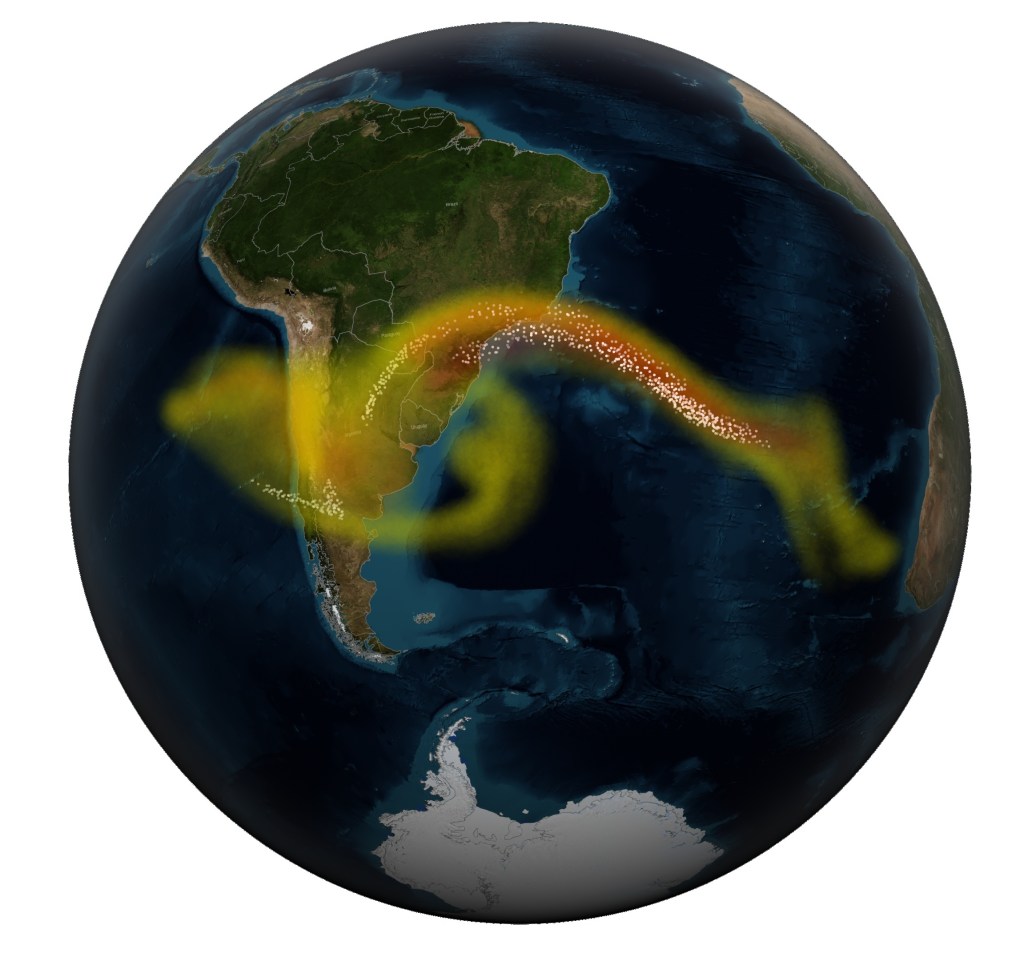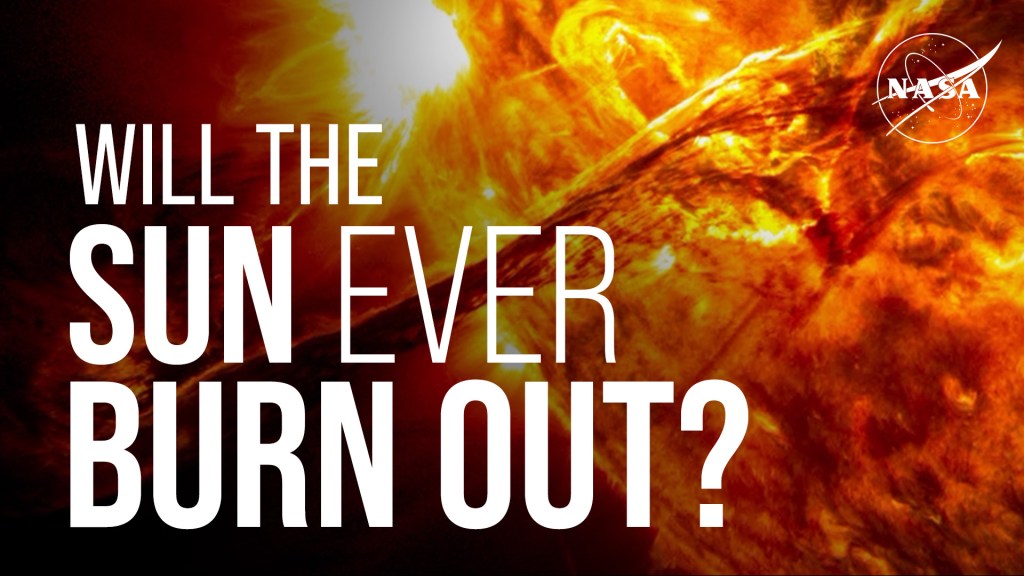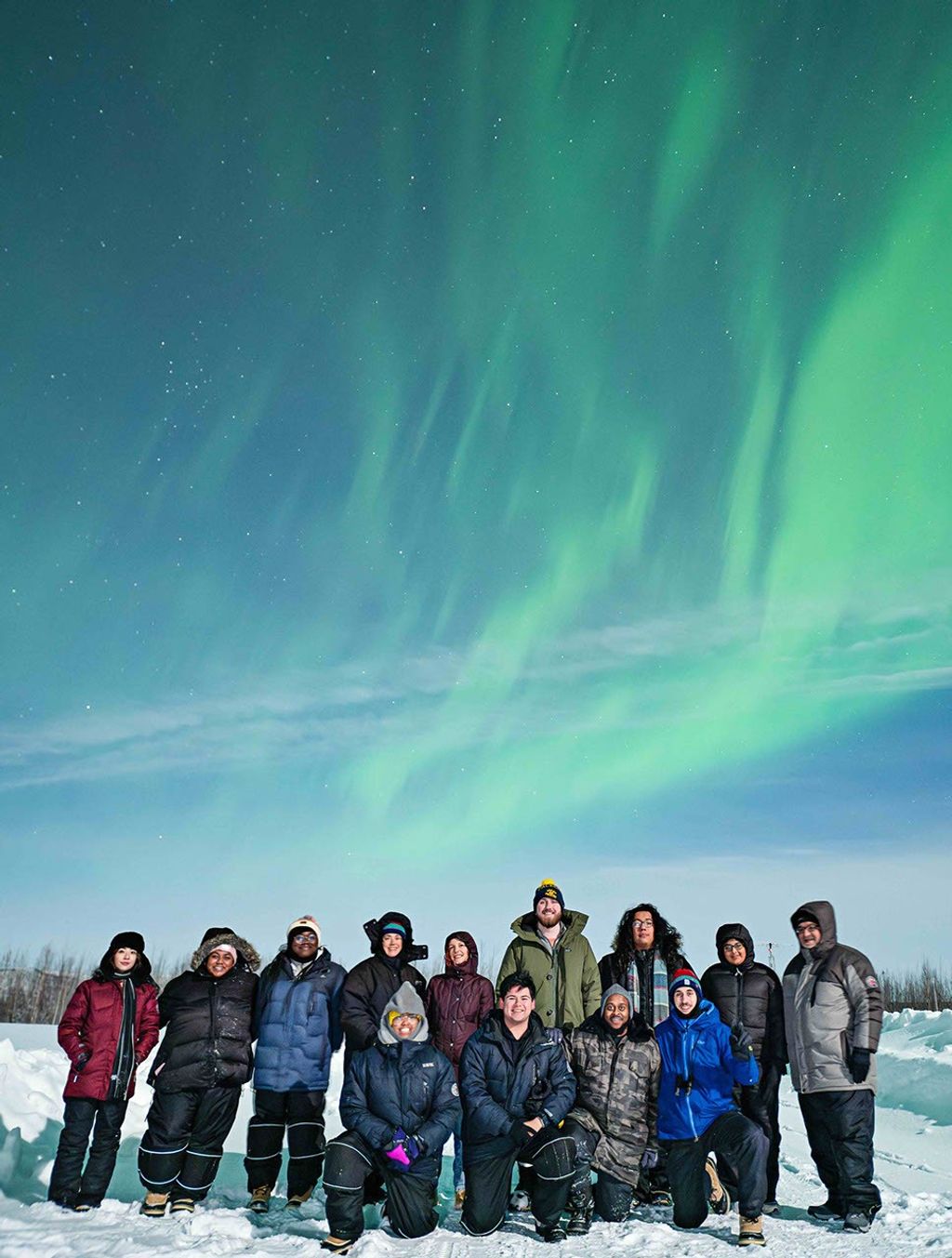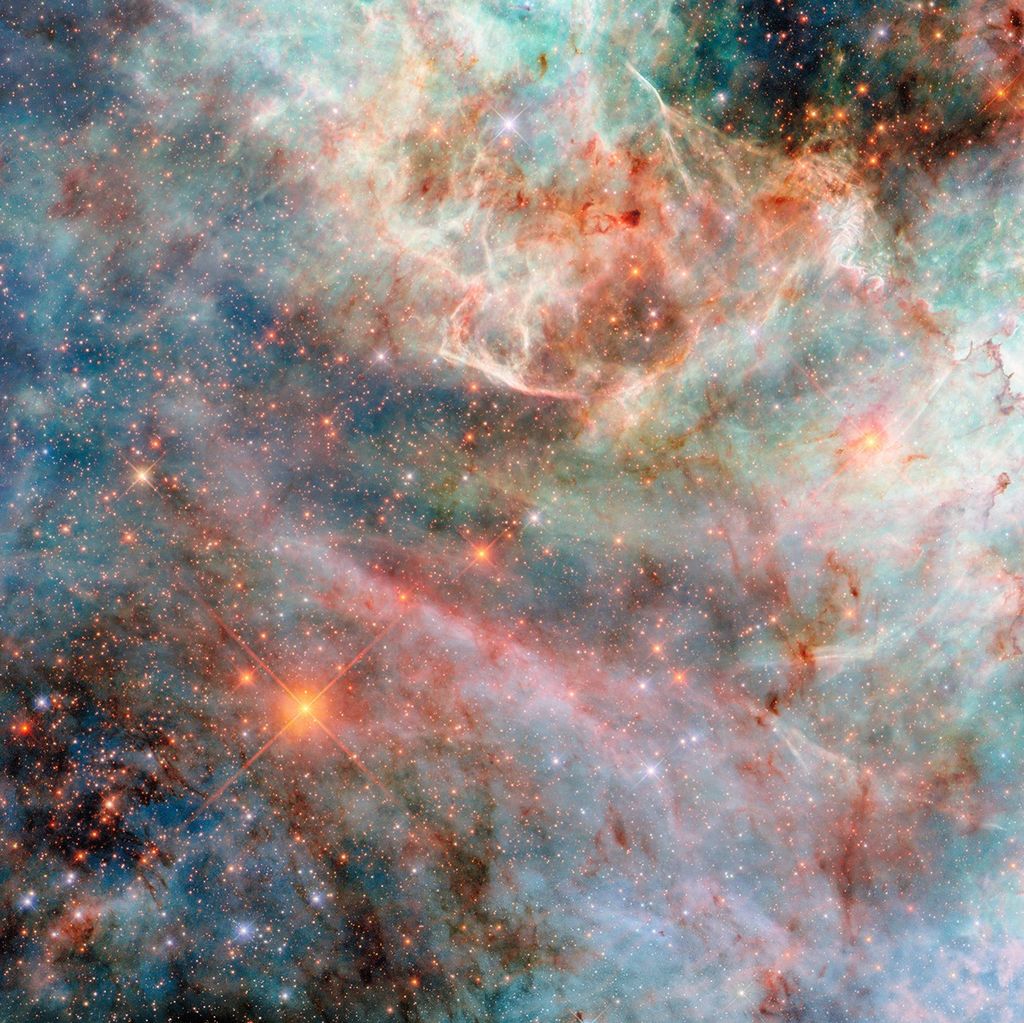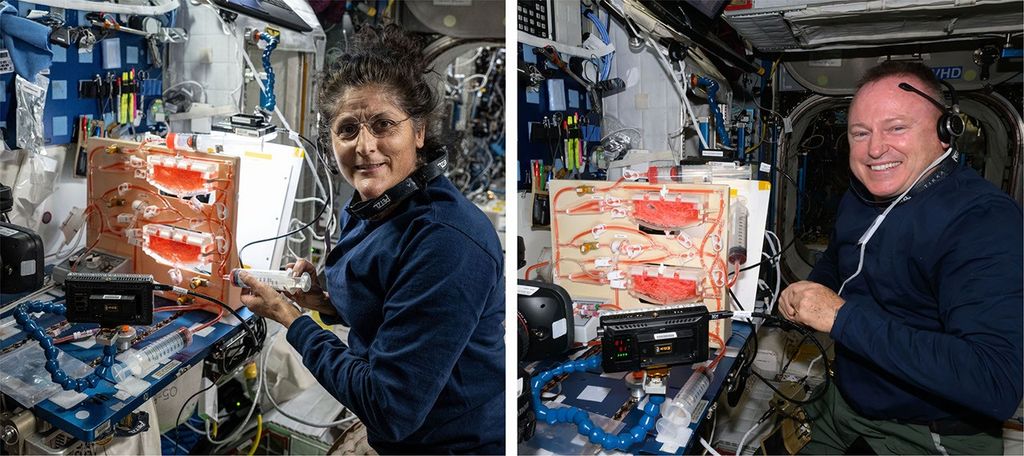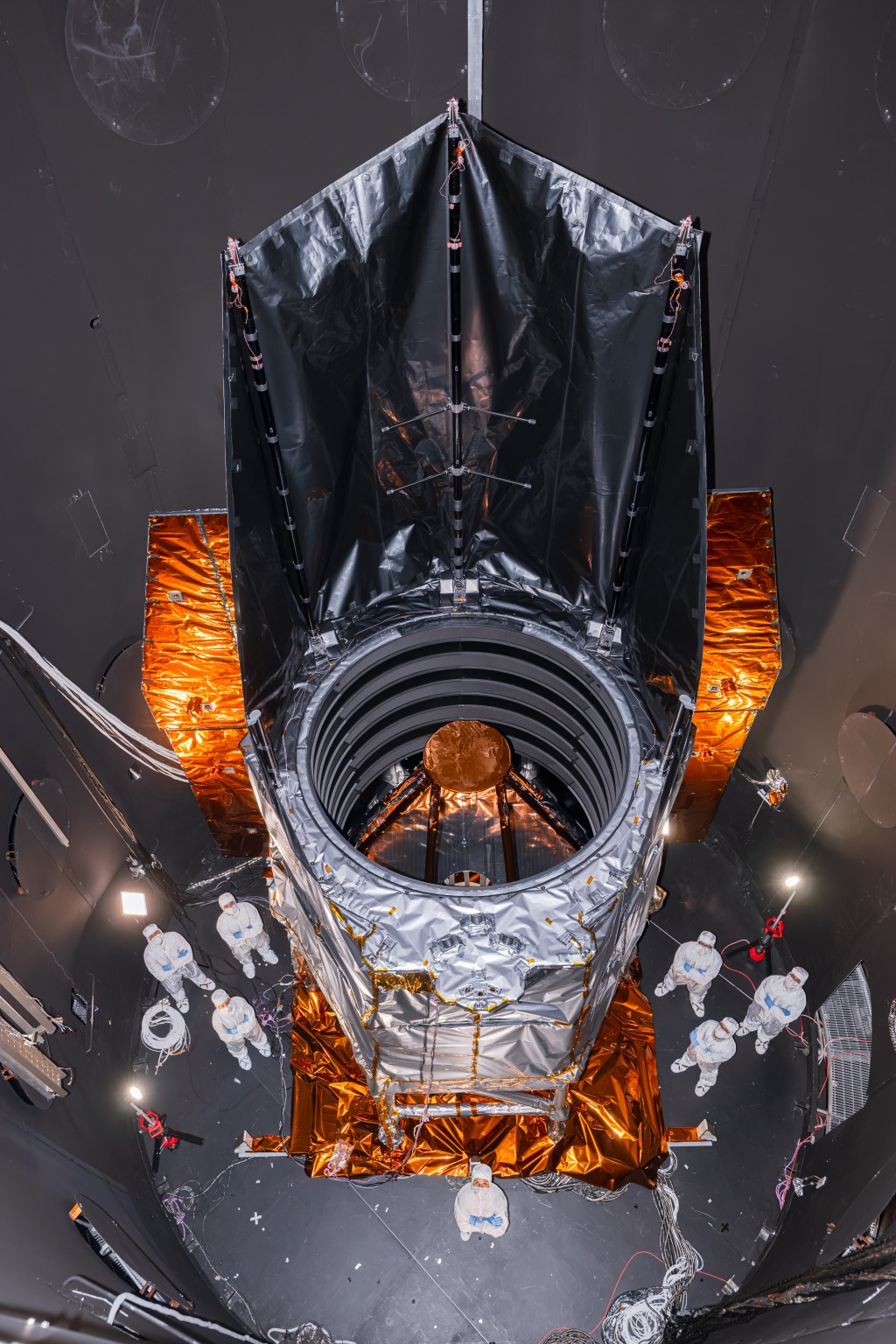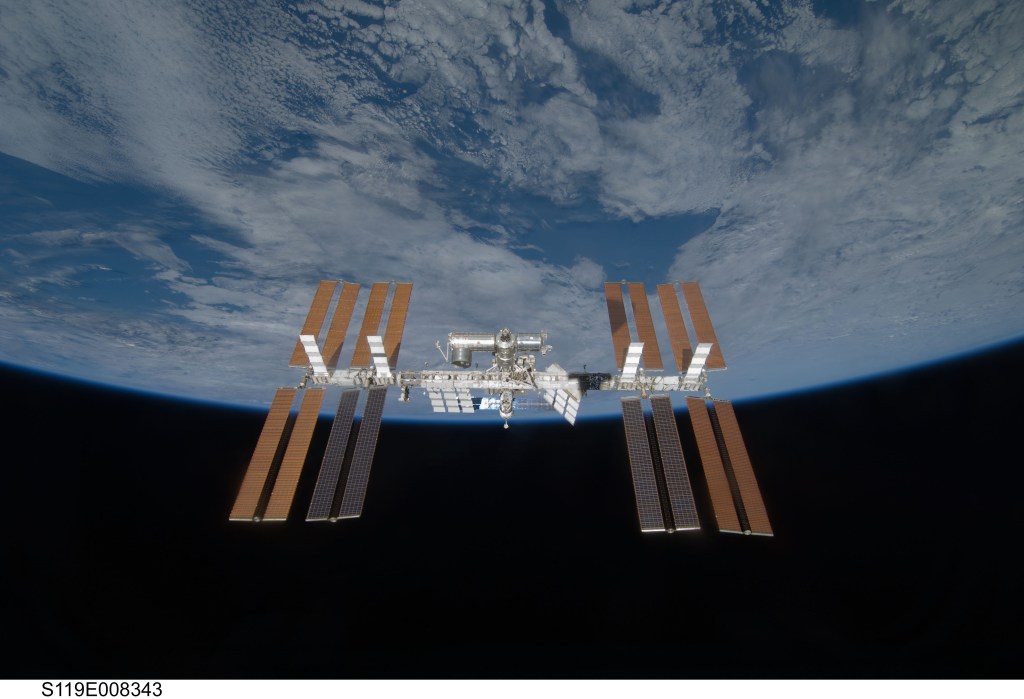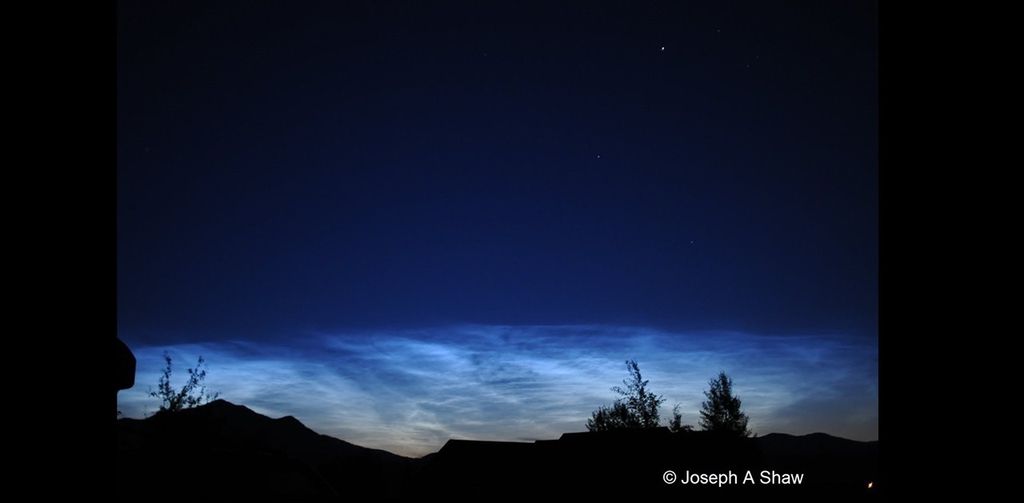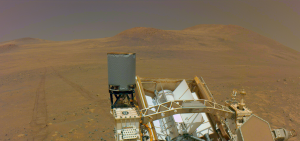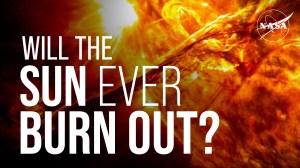17 min read
March 2022: The Next Full Moon is the Crow, Crust, Sap, Sugar, and Worm Moon
The next full moon is the Crow, Crust, Sap, Sugar, and Worm Moon.
The next full moon will be early Friday morning, March 18, appearing opposite the Sun in Earth-based longitude at 3:18 a.m. EDT. This will be on Thursday night from the Alaska Daylight Time Zone westward across the Pacific Ocean to the International Date Line. The Moon will appear full for about three days around this time, from Wednesday evening through Saturday morning.
In the 1930s the Maine Farmer's Almanac began publishing Native American moon names for each month of the year. According to the almanac, as the full moon in March, this is the Crow, Crust, Sap, Sugar, or Worm Moon. The more northern tribes of the northeastern United States knew this as the Crow Moon, with the cawing of crows signaling the end of winter. Other northern names were the Crust Moon because the snow cover became crusted from thawing by day and freezing by night, or the Sap (or Sugar) Moon, as this was the time for tapping maple trees. The more southern tribes called this the Worm Moon after the earthworm casts that appeared as the ground thawed. It makes sense that only the southern tribes called this the Worm Moon. When glaciers covered the northern part of North America they wiped out the native earthworms. After these glaciers melted about 12,000 years ago, the more northern forests grew back without earthworms. Earthworms in these areas are now mostly invasive species introduced from Europe and Asia.
A European name for this full moon is the Lenten Moon, as this corresponds with Lent, the traditional period of fasting that precedes Easter.
This full moon is near the middle of the second Adar in the Hebrew lunisolar calendar. The Purim holiday is celebrated on the 14th day of the second Adar (in Hebrew years that have two Adars) or on the 15th in Jerusalem and ancient walled cities. In 2022, Purim will be from sunset on Wednesday, March 16 to nightfall on Thursday, March 17. This holiday marks the Jewish people’s deliverance from a royal death decree around the fourth century BCE, as told in the Book of Esther, and is celebrated by exchanging gifts of food and drink, feasting, and donating to charity.
As the full moon in the Hindu month Phalguna, this Moon corresponds with the Holi festival, which celebrates the victory of good over evil and the start of spring. This two-day festival is also known as the Festival of Love, Festival of Colors, or the Festival of Spring. Holi begins with a bonfire the evening before the day of the full moon, continues on the day of the full moon with a free-for-all game involving the spraying of colored powders and/or colored water on whoever wanders by, and ends with evening visits with friends and family.
Every full moon is a holiday in Sri Lanka. This full moon is Medin or Madin Poya, marking the Buddha’s first visit to his father after his enlightenment.
This full moon is near the middle of Sha'ban, the eighth lunar month in the Islamic lunar calendar and the month before Ramadan. Muslims celebrate the 15th day of Sha'ban (which is always near the day of the full moon) as Shab-e-Barat or Bara'at Night. Shia Muslims also celebrate this as Mid-Sha'ban.
Continuing the tradition of naming moons after prominent phenomena tied to the time of year, a few years ago my friend Tom Van Wagner suggested naming this the Pothole Moon. It may be a case of confirmation bias, but even on my bicycle, I've noticed more potholes lately.
As usual, the wearing of suitably celebratory celestial attire is encouraged in honor of the full moon. Consider exchanging gifts of food and drink; donating to charity; and watching out for crows, worms, potholes, and friends and neighbors wanting to spray you with colors.
As for other celestial events between now and the full moon after next (with specific times and angles based on the location of NASA Headquarters in Washington, D.C.):
As winter ends and spring begins, the daily periods of sunlight continue to lengthen, changing at their fastest around the spring equinox on March 20. On Friday, March 18, (the day of the full moon), morning twilight will begin at 6:17 a.m. EDT, sunrise will be at 7:15 a.m., solar noon will be at 1:16:02 p.m. when the Sun will reach its maximum altitude of 50.37 degrees, sunset will be at 7:18 p.m., and evening twilight will end at 8:16 p.m. By Saturday, April 16 (the day of the full moon after next), morning twilight will begin at 5:30 a.m., sunrise will be at 6:30 a.m., solar noon will be at 1:07:49 p.m. when the Sun will reach its maximum altitude of 61.42 degrees, sunset will be at 7:46 p.m., and evening twilight will end at 8:47 p.m.
On the evening of Friday, March 18, (the day of the full moon), as evening twilight ends (at 8:16 p.m. EDT), the Moon will appear about 4 degrees above the eastern horizon. The bright stars of the local arm of our home galaxy will appear spread from the south-southeast toward the northwest. Sirius, the brightest of the stars in our night sky, will appear 34 degrees above the southern horizon. The bright star appearing nearest to overhead will be Pollux (the brighter of the twin stars in the constellation Gemini) at 75 degrees above the southeastern horizon. Pollux is an orange-tinted star about 34 lightyears from Earth. It is not quite twice the mass of our Sun but about 9 times the diameter and 33 times the brightness.
As the lunar cycle progresses, the background of stars will appear to shift westward each evening (although it is actually Earth that is moving around the Sun toward the east). The waxing moon will appear near the Pleiades star cluster on April 4 and the bright stars Aldebaran on April 5, Pollux on April 9, and Regulus on April 12. After about April 10 the planet Mercury will begin emerging from the glow of dusk (about 30 minutes after sunset) low on the west-northwestern horizon. Mercury will appear above the horizon as evening twilight ends beginning April 14.
By the evening of Saturday, April 16, (the day of the full moon after next), as evening twilight ends (at 8:47 p.m. EDT), the full moon will appear about 9 degrees above the east-southeastern horizon, with the bright star Spica appearing about 9 degrees to the upper right of the Moon. The bright planet Mercury will appear only 2 degrees above the west-northwestern horizon. The bright stars of the local arm of our home galaxy will appear spread along the west-southwestern horizon. Sirius, the brightest of the stars in our night sky, will appear 24 degrees above the southwestern horizon. The bright star appearing nearest to overhead will still be Pollux at 68 degrees above the west-southwestern horizon.
On the morning of March 18, (the day of the full moon), as morning twilight begins (at 6:17 a.m. EDT), the bright planet Venus will appear 12 degrees above the east-southeastern horizon, next in brightness will be Saturn at 5 degrees above the east-southeastern horizon, and Mars will appear to the lower right of Venus at 10 degrees above the southeastern horizon. The full moon will appear 15 degrees above the western horizon. The bright star appearing closest to overhead will be Vega at 70 degrees above the eastern horizon. Vega is the 5th brightest star in our night sky and the brightest of the three stars in the Summer Triangle. Vega is about twice as massive as our Sun, 40 times brighter, and about 25 lightyears from us.
As the lunar cycle progresses, the background of stars – along with Saturn – will appear to shift westward each morning, while Venus and Mars will appear to shift in the opposite direction toward Saturn. The waning moon will pass near the bright stars Spica on March 20 and Antares on March 23. In the latter part of March, Venus, Saturn, and Mars will appear clustered together on the east-southeastern horizon. On March 25, Jupiter will be rising above the eastern horizon 30 minutes before sunrise, approximately the first morning Jupiter will be visible in the glow of dawn. The Moon will join the cluster of Venus, Saturn, and Mars on the morning of March 28, which should be one of the observing highlights for this lunar cycle! Venus and Saturn will appear closest to each other the morning of March 29, a little over 2 degrees apart, with Saturn to the lower right of Venus. Saturn and Mars will appear closest to each other the morning of April 5, less than one-half degree apart, with Mars below Saturn. After this, Venus, Saturn, and Mars will appear to separate. Beginning April 12, Jupiter will join these visible planets above the eastern horizon as morning twilight begins, giving us four of the five visible planets in the morning sky.
By the morning of April 16, (the day of the full moon after next), as morning twilight begins (at 5:30 a.m. EDT), four of the five visible planets will appear in a line, with Saturn to the upper right at 15 degrees above the southeastern horizon, Mars at 12 degrees above the east-southeastern horizon, Venus at 8 degrees above the east-southeastern horizon, and Jupiter to the lower left at 2 degrees above the eastern horizon. The full moon will appear 11 degrees above the west-southwestern horizon with the bright star Spica to the lower left of the Moon. The bright star appearing closest to overhead will still be Vega at 83 degrees above the eastern horizon.
On Saturday evening into Sunday morning, March 12 to 13, the bright star Pollux (the brighter of the twins in the constellation Gemini) will appear near the waxing gibbous moon. The Moon will be about 70 degrees above the southeastern horizon as evening twilight ends (at 7:10 p.m. EST) with Pollux about 4 degrees to the left of the Moon. The Moon will reach its highest in the sky for the night about an hour later (at 8:18 p.m.), with Pollux to the upper left. They will appear at their closest about six hours later on Sunday morning (right around the time we switch from EST to EDT), with Pollux to the upper right. The Moon will set first on the west-northwestern horizon about two hours after that at 5:04 a.m. EDT.
On Sunday morning, March 13, don't forget to spring forward as most of us switch to Daylight Saving Time. If you're writing a novel and need something to occur at an unreal time, consider between 2:00 and 2:59 a.m. on March 13, 2022, as this won't exist for much of the U.S.
On Tuesday night into Wednesday morning, March 15 to 16, the bright star Regulus will appear near the waxing gibbous moon. As evening twilight ends at 8:13 p.m. EDT, the Moon will appear 40 degrees above the eastern horizon with Regulus about 6 degrees to the lower right. The Moon will reach its highest in the sky for the night around midnight at 11:46 p.m. with Regulus below the Moon. As morning twilight begins on Wednesday morning at 6:20 a.m. Regulus will appear below the Moon and only about 2 degrees above the west-northwestern horizon.
Although Venus and Mars will have appeared near each other throughout this lunar cycle, they will reach their closest on Wednesday morning, March 16, 3.9 degrees apart. As morning twilight begins at 6:20 a.m. EDT bright Venus will appear 13 degrees above the east-southeastern horizon with Mars to the lower right. Saturn will appear farther to the lower left at 4 degrees above the horizon.
As mentioned above, the next full moon will be on Friday morning, March 18, at 3:18 a.m. EDT. The Moon will appear full for about three days around this time, from Wednesday night to Saturday morning.
On Saturday night into Sunday morning, March 19 to 20, the bright star Spica will appear to the lower right of the waning gibbous moon. The Moon will rise first, then Spica will rise above the east-southeastern horizon at 9:17 p.m. EDT. The Moon will reach its highest in the sky for the night early Sunday morning at 2:53 a.m.
Sunday morning, March 20, will be when Venus reaches its greatest angular separation from the Sun as seen from Earth for this apparition (called greatest elongation), appearing half-lit through a large telescope. Because the angle of the line between the Sun and Venus and the horizon changes with the seasons, when Venus and the Sun appear farthest apart as seen from Earth is not the same as when Venus appears highest above the eastern horizon before sunrise, which occurred earlier in February.
Sunday, March 20 at 11:33 a.m. EDT, will be the vernal equinox, the astronomical start of spring.
On Wednesday morning, March 23, the bright star Antares will appear below the waning gibbous moon. Antares will rise after the Moon, appearing above the southeastern horizon at 1:06 a.m. EDT. The Moon will reach its highest in the sky for the night at 5:31 a.m. about 38 minutes before morning twilight begins.
Wednesday evening, March 23, at 7:38 p.m. EDT, the Moon will be at perigee, its closest to Earth for this orbit.
Early Friday morning, March 25, the waning moon will appear half-full as it reaches its last quarter at 1:37 a.m. EDT. Jupiter will rise above the eastern horizon 30 minutes before sunrise, approximately the first morning Jupiter will be visible in the glow of dawn.
In the mornings in the latter part of March, the planets Venus, Saturn, and Mars will appear clustered together on the east-southeastern horizon. On Monday morning, March 28, the waning crescent moon will join these planets, which should be one of the observing highlights for this lunar cycle! To see this display you will need a clear view of the east-southeastern horizon. The Moon will be the last to rise at 5:26 a.m. EDT, and it will reach 5 degrees above the horizon 35 minutes later as morning twilight begins at 6:01 a.m.
On Tuesday morning, March 29, the bright planet Venus and the fainter planet Saturn will appear at their closest to each other, a little over 2 degrees apart, with Saturn to the lower right of Venus. Mars will appear farther to the right of Venus and Saturn.
Early Friday morning, April 1, at 2:25 a.m. EDT, will be the new moon, when the Moon passes between the Earth and the Sun and will not be visible from Earth. The day of – or the day after – the new moon marks the start of the new month for most lunisolar calendars. The third month of the Chinese calendar starts on Friday, April 1 (at midnight in China's time zone, which is 12 hours ahead of EDT). Sundown on Friday evening, April 1, marks the start of Nisan in the Hebrew calendar.
In the Islamic calendar, the months start with the first sighting of the waxing crescent moon. Many Muslim communities follow the Umm al-Qura calendar of Saudi Arabia, which uses astronomical calculations to start the months in a more predictable way (intended for civil and not religious purposes). Because of Ramadan's religious significance, it is one of four months in the Islamic year in which the start of the month is updated in the Umm al-Qura calendar based upon the actual sighting of the crescent moon. This calendar predicts the holy month of Ramadan will start with sunset on Friday evening, April 1, but the actual start will be adjusted based on observations of the crescent moon. Ramadan is honored as the month in which the Quran was revealed. Observing this annual month of charitable acts, prayer, and fasting from dawn to sunset is one of the Five Pillars of Islam.
On Saturday evening, April 2, Mercury will be passing on the far side of the Sun as seen from Earth, called superior conjunction. Because Mercury orbits inside of the orbit of Earth, Mercury will be shifting from the morning sky to the evening sky and will begin emerging from the glow of dusk on the western horizon on or after April 10 (depending on viewing conditions).
On Monday evening, April 4, the Pleiades star cluster will appear about 5 degrees to the upper right of the waxing crescent moon. If you live in an urban area with light pollution, you may need binoculars to really appreciate this star cluster.
On Tuesday morning, April 5, Saturn and Mars will appear at their closest to each other, less than half a degree apart, with Mars below Saturn. Venus will appear farther to the lower left of Saturn and Mars. Venus will rise last above the east-southeastern horizon at 4:54 a.m. EDT) and will be about 10 degrees above the horizon as morning twilight begins about an hour later at 5:48 a.m.
On Tuesday evening, the bright star Aldebaran will appear about 7 degrees to the lower left of the waxing crescent moon.
Thursday afternoon, April 7, at 3:11 p.m. EDT, the Moon will be at apogee, its farthest from Earth for this orbit.
Early Saturday morning, April 9, the waxing moon will appear half-full as it reaches its first quarter at 2:48 a.m. EDT – about 11 minutes before the Moon sets below the northwestern horizon for the Washington, D.C. area.
On Saturday evening into Sunday morning, April 9 to 10, the bright star Pollux (the brighter of the twins in the constellation Gemini) will appear to the right of the waxing half moon. The pair will appear about 6 degrees apart as evening twilight ends and they will be about 8 degrees apart by the time Pollux sets below the northwestern horizon Sunday morning at 3:25 a.m. EDT).
Beginning on or after Sunday evening, April 10, Mercury will start emerging from the glow of dusk (about 30 minutes after sunset) low on the west-northwestern horizon.
Beginning the morning of Tuesday, April 12, Jupiter will join Venus, Saturn, and Mars above the eastern horizon as morning twilight begins, giving us a view of four of the five visible planets!
On Tuesday evening into Wednesday morning, April 12 to 13, the bright star Regulus will appear to the right of the waxing gibbous moon. They will appear about 8 degrees apart as evening twilight ends Tuesday evening at 8:42 p.m. EDT. The Moon will reach its highest in the sky for the night less than two hours later at 10:24 p.m., and the Moon will set Wednesday morning at 5:17 a.m. about 10 minutes before morning twilight begins.
Beginning Thursday evening, April 14, Mercury will start appearing above the west-northwestern horizon as evening twilight ends.
Friday evening into Saturday morning, April 15 to 16, the bright star Spica will appear below the full moon. They will appear about 9 degrees apart as evening twilight ends and will shift closer together as the night progresses.
The full moon after next will be Saturday afternoon, April 16, at 2:55 p.m. EDT. The Moon will appear full for about three days centered on this time, from early Friday morning through early Monday morning, making this a full moon weekend.
Keep Exploring
Discover More Topics From NASA

